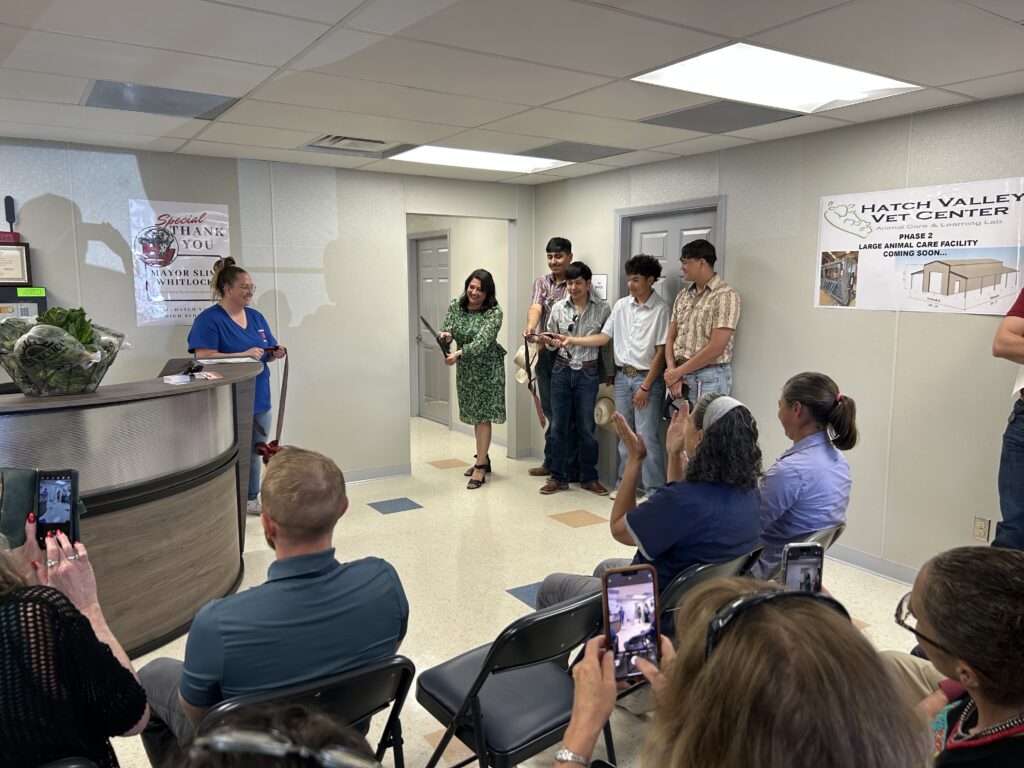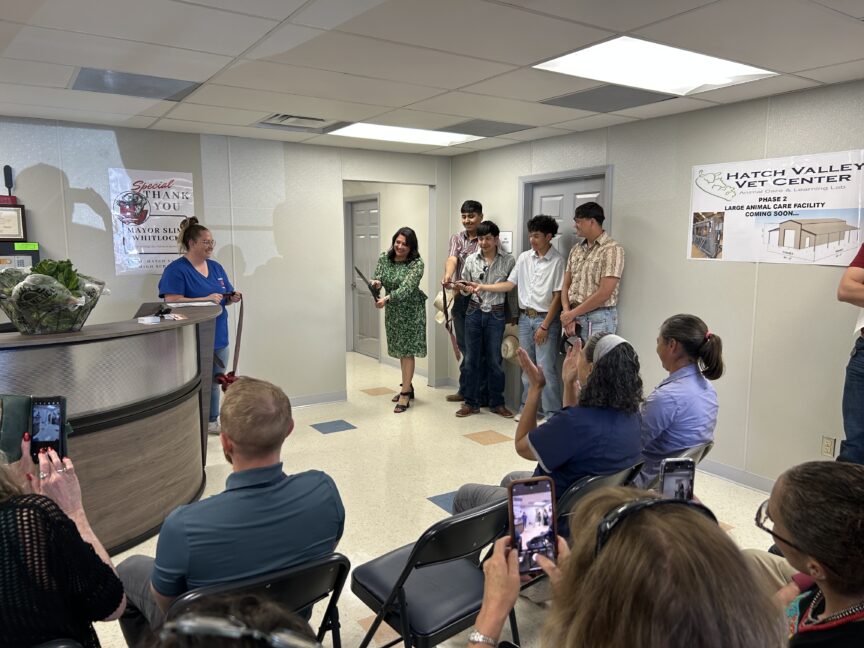Improving Students’ Lives at Hatch Valley Public Schools

In an effort to find things that work in our education system, we want to highlight the Hatch Valley Public Schools. The transformation in the district has involved everyone - including students - in the small town. Too often, traditional education models have been a one-size-fits-all, top-down approach placed upon schools by outside administrators, without regard for unique local contexts and needs. But schools and communities can have reciprocal relationships when everyone in that community is included in decisions involving schooling and vice versa. That’s exactly what’s happening in Hatch.
Nestled along the Rio Grande in southern New Mexico, the village of Hatch is known for its world-famous chile. But this small farming town of under 2,000 people is more than just a stop on the map - it’s a tight-knit community steeped in agricultural tradition and New Mexican cultural pride.
Recently, Hatch has gained attention for its innovative approach to education, placing community needs at the center of its curriculum and the school at the heart of the community. This shift began six years ago when Superintendent Michael Chavez brought a big vision to Hatch Valley Public Schools (HVPS).
Chavez, who grew up in nearby Deming, emphasizes the importance of never settling for less than bigger districts who might have more funding or resources. HVPS is a Title I district, meaning most students come from low-income families, but that doesn’t mean they don’t deserve the best education.

HVPS students working at the food pantry.
“We’ve got to be in a constant state of looking for improvements, renewing ourselves, reinventing ourselves for the sake of the kids.”
The transformation began with a needs assessment that brought the community together to identify shared goals. Chavez credits the late mayor Slim Whitlock for helping build a strong, collaborative relationship between the school and the town.
“He was very visionary,” Chavez says. “He had a big heart for this community—just a love like you wouldn’t believe.”
Together, they sparked a movement that soon involved the whole town.
“We’ve got to be in a constant state of looking for improvements, renewing ourselves, reinventing ourselves for the sake of the kids.” - HVPS Superintendent Michael Chavez
Solving Community Problems while Increasing Student Opportunities
Hatch once had a thriving agriculture program that dwindled due to funding challenges. The community called for its revival—especially given farming’s deep roots in the region. One major concern: water scarcity. So, HVPS Agriculture Instructional Coach Kim O’Byrne proposed a solution.
“We found this new technology of raising food called a freight farm,” O’Byrne explains. “It’s all grown in a 10’ x 40’ container. You can grow three and a half acres, and it uses 97% less water.”
The school secured funding to launch New Mexico’s only high school freight farm. These self-contained hydroponic systems allow students to explore STEM, sustainability, and agriculture year-round. The freight farm now anchors the district’s agriculture Career and Technical Education (CTE) pathway, with courses in horticulture, botany, and greenhouse operations. Students also earn Safe Food Handlers certifications.

Lettuce growing in the freight farm.
Another community concern: stray animals. Unvaccinated, unneutered strays were causing public health issues and delays at bus stops. With no local shelter, Hatch police had to transport animals 40 minutes away - one of the department’s largest expenses.
With many students interested in medicine, HVPS proposed a veterinary clinic to serve both community and student needs.
With many students interested in the medical field, the school and community got to thinking - veterinary medicine is not so different from human medicine, at least at the early stages, and it would meet a crucial community need if HVPS started their own vet clinic.
“There is a critical shortage nationwide of rural veterinarians,” says O’Bryne. “So being able to train our students to be bilingual techs, bilingual veterinarians, bilingual medical assistants, they can go and take that anywhere in the world.”
Many - if not most - students in Hatch speak English and Spanish fluently. The school is helping students leverage their linguistic skills to make them more competitive in the job market.
After much work and collaboration with the Village Board of Trustees and the Hatch Village Police Department, the Hatch Valley Vet Center will have their open house on April 24, 2025. The center will provide opportunities for students to get hands-on experience and work-based learning placements to help them get started in careers that are in high demand. The clinic will also house a dog grooming business that will allow students to practice animal care and develop skills that encourage entrepreneurship. Hatch Valley Public Schools also worked closely with New Mexico State University’s (NMSU) National Agri-Marketing Association to brand and develop a logo that students, faculty, and the school board decided on.
HVPS has launched other student- and family-focused efforts as well, including a food pantry and school-based clothing bank—essential services in an area with limited grocery access and economic opportunities.
“Our athletics teams have been going over and volunteering at the food pantry,” says Hatch Valley High School Principal Brandy Holguin. “I’ve heard a lot of great stories of our kids taking carts out and loading groceries.”
Middle school students help organize clothing donations. Holguin says these programs not only meet community needs but also give students meaningful, hands-on experiences.
As a Title I school, paid CTE and work-based learning (WBL) are vital. Many internships are hosted within the district itself, such as in the agriculture program, vet clinic, and the strong Educators Rising program. That initiative places high schoolers in elementary classrooms—often alongside teachers they once had.
“Work experience develops work ethic, responsibility, and social skills,” says Chavez. “But for our kids, it means more, because we’ve got so many that come from poverty.”
Students no longer have to choose between school and income. Paid internships keep them enrolled while offering certifications like OSHA, Serve Safe, and the New Mexico State Seal of Bilingualism and Biliteracy.
“What we strive to do here is expose kids to a lot of different opportunities,” says Holguin. “We’re a very rural, ag-based community, but we want to broaden their horizons.”

HVPS students volunteering at the food pantry.
“There is a critical shortage nationwide of rural veterinarians. So being able to train our students to be bilingual techs, bilingual veterinarians, bilingual medical assistants, they can go and take that anywhere in the world.” - HVPS Agriculture Instructional Coach Kim O’Byrne
A Clear Purpose: Improving Student’s Lives
During conversations around the needs assessment, Hatch Valley Public Schools struggled to think of real, tangible goals. Chavez knew that they needed agreement on a larger purpose for the school, something they could relate everything back to. In one meeting, a high school teacher said, “Well, isn't our purpose just to improve the quality of life of our kids?” Chavez says it was a mic-drop moment - a simple purpose that they could all get behind. Soon after, every Hatch Valley Public School decision was guided by one question: how does this improve the quality of life for our students?
Over the last three years, improvement efforts led by Hatch Valley Public Schools have been funded in part by Innovation Zones (IZ), a state run initiative that launched in 2021. As an Innovation Zone school, HVPS uses the funding and technical assistance to purchase new equipment, develop and implement work-based learning (WBL), Career and Technical Education (CTE) programs, and other programs aligned with community needs.
This year, they’ve been working on building relationships with community partners to create work-based learning opportunities outside of the school district, which is a challenge because of how small and rural the area is, but they’ve been able to place some students and get them paid through Innovation Zone funding.

Lettuce from the freight farm.
Chavez says that while IZ funding is just one piece of improving the lives of Hatch’s youth, the technical support and training has been crucial in terms of learning how to implement the new programs.
“I've seen a lot of engagement and excitement from our staff. I think a lot of our teachers are inspired and have taken advantage of the networking opportunities that have come from all of the events through IZ,” says Chavez. “And they're starting to realize that they can have ideas too and can help propel the whole family forward.”
Hatch is showing what’s possible when education is shaped by the people it serves. By including students and community members in decision-making, the district has built a model rooted in local strengths, not outside mandates - and it’s working.
“I think Innovation Zones have given our students a chance, a platform to raise their voice,” adds Audra Bluehouse, District Data and Media Coordinator. “It's been so beautiful to see our kids come out of their shell to really share what they value.”


